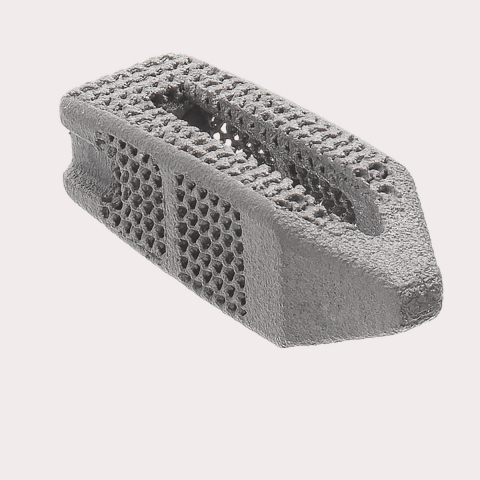
Dr. Joel Siegal Performs The First Patient Implant Of The 3D-Printed FORZA™ System.
As featured on Becker's Spine Review, on June 29th, 2021, neurosurgeon Joel Siegal, MD, performed the first patient implant of the 3D-printed FORZA™ Titanium PLIF Spacer System with Nonavate™ Technology. This system was developed to enhance posterior and transforaminal lumbar procedures. In addition, the porous design of the implant promotes bone ingrowth. This is a huge step for lumbar interbody fusion.
Which patients can benefit from the FORZA™ System?
According to Orthofix, patients who are in need of a spinal fusion procedure, who are skeletally mature, and have degenerative disc disease (DDD) at 1 or 2 contiguous levels in the lumbar spine may benefit from the procedure. They define DDD as “back pain of discogenic origin with degeneration of the disc confirmed by patient history and radiographic studies.” They also state that the DDD patients may have up to a Grade 1 spondylolisthesis and have had a previous nonfusion surgery at the involved levels.
Also, patients must go through a regimen of at least months of non-operative treatment before the procedure.
What are the product highlights of the FORZA™ System?
Orthofix outlines the highlights as:
● Large opening for packing bone grafting material
● Bulleted nose to assist with distraction
● 3D porous titanium with macro, micro, and nano-scale surface features
● The nano-scale surface has shown to increase proliferation and alkaline phosphatase activity (an early osteogenic differentiation marker) in human stem cells in vitro*
● 3D-printed titanium endplates with 400-micron pores and 50% porosity designed to help facilitate bone ingrowth**
● The endplates consist of interconnected gyroid structures analogous in form to the trabecular bone that provide an open porous environment
● Functional gradient porous structure with 80% porosity at the midline of the implant allows for increased fluoroscopic visualization
*In vitro performance may not be representative of clinical performance
**As suggested in an in-vivo ovine lumbar spinal fusion model
What are the contraindications of The Forza™ System?
A contraindication in the medical world is the reason or reasons why someone should not take a medication or undergo a procedure. The contraindications listed by Orthofix for The FORZA System are:
● With active infections in which the use of an implant could preclude adequate and appropriate treatment of the infection
● With rapidly progressive joint disease or bone absorption syndromes such as Paget’s disease, osteopenia, osteoporosis, or osteomyelitis which may prevent adequate fixation
● With conditions that may place excessive stresses on bone and implants, such as severe obesity, pregnancy, or degenerative diseases. The decision to use this system in such conditions must be made by the physician taking into account the risks versus the benefits to the patient.
● With prior fusion at the level to be treated
● Any circumstances not listed under the heading indications
About Dr. Joel Siegal
Neurosurgeon Joel Siegal was an excellent choice to perform this first 3D-printed FORZA™ Titanium PLIF Spacer System with Nanovate™ Technology. He is a nationally recognized brain, nerve, and spine surgeon who is constantly looking to deliver cutting-edge, minimally disruptive care focusing on compassion and patient comfort. Nothing makes Dr. Siegal happier than being able to help his patients overcome their chronic pain, and this procedure does just that.